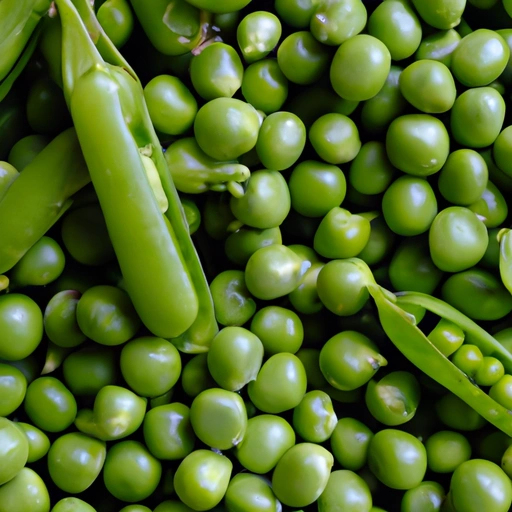Pea
Description

Peas are a small yet mighty ingredient popular in kitchens around the world. Known for their versatility, they can be found in a variety of sizes and colors, including green, yellow, and purple. In both their fresh and dried forms, peas are used in a myriad of dishes, contributing a sweet flavor and numerous health benefits to any meal.
Common uses
Peas are commonly found in soups, stews, salads, and casseroles. They are also frequently served as a side dish or puréed into spreads and dips. In Indian cuisine, peas are a staple in dishes like aloo matar and matar paneer. In British cuisine, mushy peas accompany traditional fish and chips. Peas also play a significant role in Chinese fried rice and are the star of the Italian classic pasta e piselli.
Nutritional value
Calories
A 100g serving of cooked green peas contains approximately 84 kcal (351 kJ).
Protein
Peas are a good source of plant-based protein, with about 5.4 grams per 100g serving.
Fat
Peas are low in fat, with just 0.4 grams per 100g serving.
Carbohydrates
Peas have a moderate carbohydrate content at around 14.5 grams per 100g serving, of which sugars are about 5.7 grams.
Vitamins
Rich in vitamins, peas provide vitamin A, B-vitamins (including folate), vitamin C, and vitamin K.
Minerals
Peas offer a variety of minerals such as manganese, phosphorus, magnesium, iron, zinc, and potassium.
Health benefits
Peas are a nutritious addition to any diet. Their high fiber content can aid in digestion and help maintain a healthy gut. The presence of antioxidants and anti-inflammatory compounds in peas also supports overall health and may reduce the risk of chronic diseases such as heart disease. Additionally, the protein and iron found in peas make them an excellent food choice for vegetarians and vegans looking to boost their protein and mineral intake.
Potential risks
While peas are generally safe for most people, they do contain purines, which can exacerbate gout in susceptible individuals. Those with kidney disorders should also be cautious, as peas have a moderate amount of potassium, which can be harmful if kidney function is compromised.
Common recipes
Peas are featured in recipes like split pea soup, pea salad, pea and ham risotto, and pea pesto pasta. They are also a popular filling in dumplings and pot pies.
Cooking methods
Peas can be boiled, steamed, sautéed, or eaten raw if tender enough. Dried peas often require soaking before cooking to reduce cooking times.
Pairing with other ingredients
Peas pair well with a variety of herbs such as mint, basil, and thyme. They are often combined with carrots, onions, and potatoes, as well as proteins like chicken, ham, and paneer.
Summary
As a multifaceted food ingredient, peas provide a wealth of nutritional benefits and culinary possibilities. From their historical origins to their modern-day applications in diverse cuisines, peas offer a sweet, nutritious addition to meals worldwide. With their impressive health benefits and low potential risks, peas are a valuable component of any balanced diet.